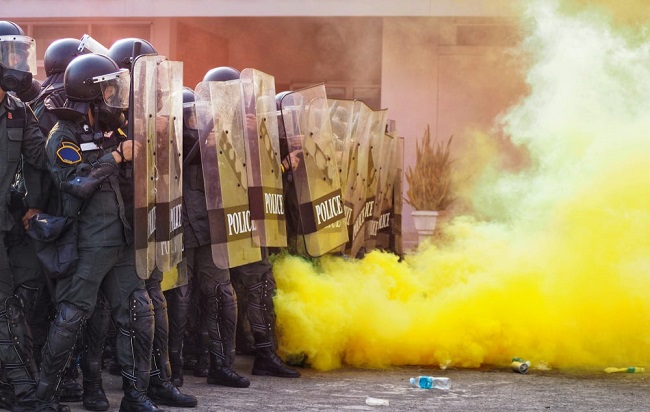Mustard gas, one of the most widely recognised and lethal chemical weapons, is a skin and eye-irritating chemical agent. If inhaled, it can cause harm to the lungs and other organs and produces severe blistering on contact.
3It can be debilitating and even horrifying, yet it seldom claims a life. Mustard gas, unlike most other chemical agents, takes between one and six hours to manifest its effects.
Mustard gas is particularly sneaky since it can cause tissue damage before the victim realises they need medical attention. Mustard gas can potentially cause cancer and birth abnormalities by damaging DNA in cells.

Is there Any Connection Between Mustard and Mustard Gas?
No. It has a yellowish hue and a pungent odour that has been likened to mustard, horseradish, garlic, and even apples. Even though it is a liquid rather than a gas at room temperature, the term “mustard gas” has stuck ever since it was used in the infamous gas assaults of World War I.
How hard is it to Produce Mustard Gas?
Experts agree that mustard gas production is less difficult than nerve gas production but more difficult than “weaponizing” industrial chemicals like chlorine. A single person is unlikely to be able to produce enough mustard gas to cause widespread death without the aid of sophisticated machinery.
Has Mustard Gas ever been Used by Terrorists?
No. However, there are rumours that forces affiliated with al-Qaeda, led by Osama bin Laden, tried to acquire the materials to produce mustard gas in Afghan laboratories.
When Compared to Other Nerve Agents Like Sarin and VX, how Effective is Mustard Gas?
Since mustard gas is only a blister agent and not a nerve agent like sarin or VX, it has limited utility as a weapon. Mustard gas can cause temporary respiratory distress, but more severe harm at higher concentrations.
According to Dr. Jean Pascal Zanders of the Stockholm International Peace Research Institute (SIPRI), terrorists would consider using mustard gas to disrupt economic or social life (by, for example, polluting a transit route), but they would not use it to kill large numbers of people.
Have Civilians been Subjected to Mustard Gas Attacks?
Yes. During his Anfal campaign in 1987 and 1988, Saddam Hussein gassed Kurds in northern Iraq using mustard gas. In March of 1988, chemical agents including mustard gas and sarin were used in an attack on the Kurdish hamlet of Halabja, killing 5,000 people and leaving 65,000 with severe skin and respiratory ailments, abnormally high rates of cancer and birth problems, and a devastated environment.
Approximately 280 chemical strikes were launched by Saddam against the Kurds, according to experts.









































